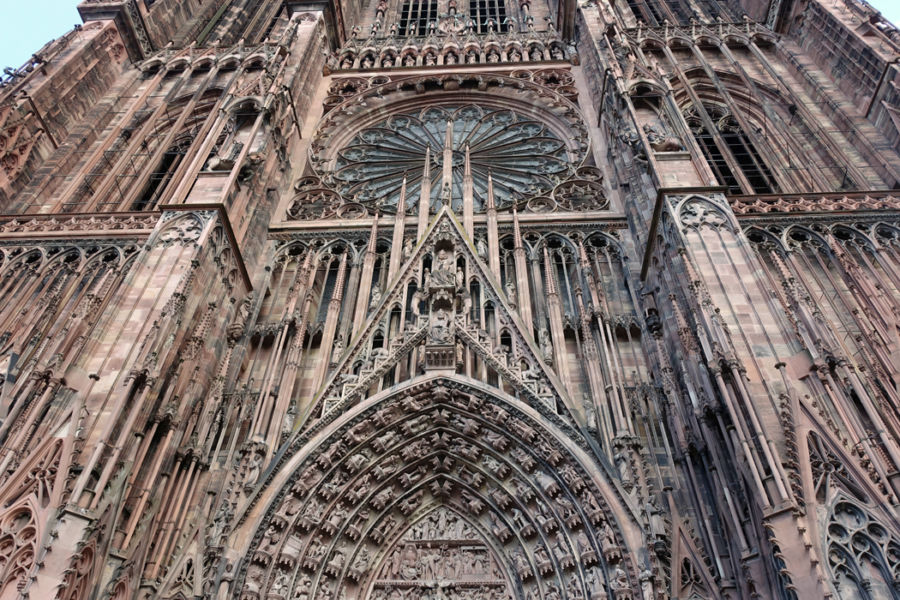Strasbourg is France’s seventh-largest city (with 275,000 people) and offers your best chance to experience urban Alsace. It feels like a giant Colmar with rivers and streetcars. Long a humanist and intellectual center, today it has a delightful big-city energy. Walking its people-friendly streets, you’ll find it progressive and livable, with generous space devoted to pedestrians and bikes, sleek trams, meandering waterways, and a youthful mix of university students, Eurocrats, and street people. With a name that means the “city of streets,” it’s the ultimate crossroads.
While the city dodged serious damage in both world wars, the people of Strasbourg have experienced a dizzying history. It was hit hard during the Franco-Prussian War, becoming part of Germany in 1870. After that, there was a period of harsh Germanization, followed by extreme Frenchification after World War I, a brutal period under Nazi rule during World War II, and then the strong need to purge all that was German after 1945. Now, while probably more definitively French than it’s ever been, you’ll feel a bi-cultural gentleness and see street names in both French and the Alsatian dialect. Bordering the west bank of the Rhine River, Strasbourg provides the ultimate blend of Franco-Germanic culture, architecture, and ambience.
After World War II, Churchill called for a union of European nations, with the goal of winning an enduring European peace by weaving the economies of France and Germany together. Noting that Strasbourg had changed hands between Germany and France so many times, it seemed logical that it be a capital (along with Brussels) of what would eventually become the European Union. And today, Strasbourg is home to the European Parliament.
Most visitors come to Strasbourg to see its massive cathedral. Stand in front and crane your neck way back. I couldn’t fit it into my viewfinder. Noting how my jaw dropped, I tried to imagine the impact this unforgettable erection would have had on medieval pilgrims. The delicate Gothic style of the cathedral (begun in 1176, not finished until 1429) is the work of a succession of about 50 master builders. The cathedral somehow survived the French Revolution, the Franco-Prussian War, World War I, and World War II. Today, it’s the big draw of the city — and for good reason.

